Quote:
Originally Posted by gsjansen

apparently there was quite a sizable jewish community in downtown los angeles, as well as bunker hill, large enough so that another temple was built not far from the broadway synagogue.
the beth torah congregation synagogue located on olive street between temple and court was built in at the turn of the century, (i don't know the exact date)
 Source
Source: LAPL |
Jews were part of the genesis of any port city, but since LA was famously generated from transplanting mid-westerners, Jews are seen as less important to its development than they are to, say, early New Orleans or Charleston. But they were a large presence and early forward force pre-WASP influx of the 80s and 90s.
As in, the first head of our Chamber of Commerce (and member of our City Council in 1853, and who co-incorporated the Water Company) was Solomon Lazard; our second police chief was
Emil Harris, Isaac Norton is incredibly important if for no other reason than being the father of
S. Tilden; and I hope I don't have to mention
Harris Newmark, whose
Sixty Years in Southern California I gather you'll agree should be required reading for any serious student of early LA!
But we're here to talk not about the Jews' doings, but their buildings...
So, Jacob Frankfort arrives in 1841, and by 1850 the Jewish quarter is at Aliso and Los Angeles St. The first formal services of congregation B'nai B'rith are held in July 1862. In 1867, with all Jewish businesses closed on Yom Kippur, a Los Angeles newspaper reported that "so many of our stores were shut, that it looked like Sunday in a New England village." (from
here) Sooooo, in August of 1872 the cornerstone's laid for our (soon-to-be) City Hall neighbor:

( from
USC)
Yes, that's an inverted pentagram. As so lovingly used by 1980s hair-metal bands to indicate their "neo-paganism" or something. The pentagle is simply known as the Seal of Solomon, just as the six-pointed star is known as the Shield of David. (That the five-pointed star could be co-opted by knuckleheads is roughly akin to the indo-sino four-armed "hooked cross" being used by those funny guys in Germany come the 1930s.)
Anyway. By 1894 B'nai B'rith has sold the property, as its “cracked walls and antiquated appearance in a busy commercial street...was not conducive to worship.” (from
here)
Thus, in 1896, they erect this guy on the NE corner of Ninth and Hope:

(from
A Visit...)

(
usc)
Abraham Edelman (son of the chief, rabbi, G-d bless him for giving his father some
nachis), architect. “The synagogue, which was long regarded as the finest church edifice in Los Angeles, was of red brick with twin towers and pomegranate domes, characteristic of ‘mosaic’ architecture.” The sanctuary seated 600. “The floor was carpeted in deep red, the pews were plush-cushioned, and the chandelier, containing sixty bulbs, was the largest in the city. Stained glass windows were presented by H.W. Hellman, Harris Newmark, Kaspare Cohn, and Mrs. J.P. Newmark.”
While the 9th & Hope 'gog is many times the Fort/Broadway gog's size and bitcheness, by the 1920s it seems hopelessly out of date architecturally, not to mention locationally, as the City moved west, so B'nai B'rith elects to build one of
America's great synagogues. Note that Abraham Edelman is again an architect on the project. (I don't care if you're a devout Muslim, you owe it to yourself to attend temple there at least once.)
But back to the 1890s. B'nai B'rith is building its monster down at 9th and Hope, which is all fine and good, except for one thing...they've gone
reform. Judaism Lite. Roughly akin to if your Roman Catholic brood were to suddenly become...Episcopalian! As such LA's three conservative/orthodox congregations band together in 1899 and form Beth Israel. Next step: build a synagogue. And where else? Bunker Hill.
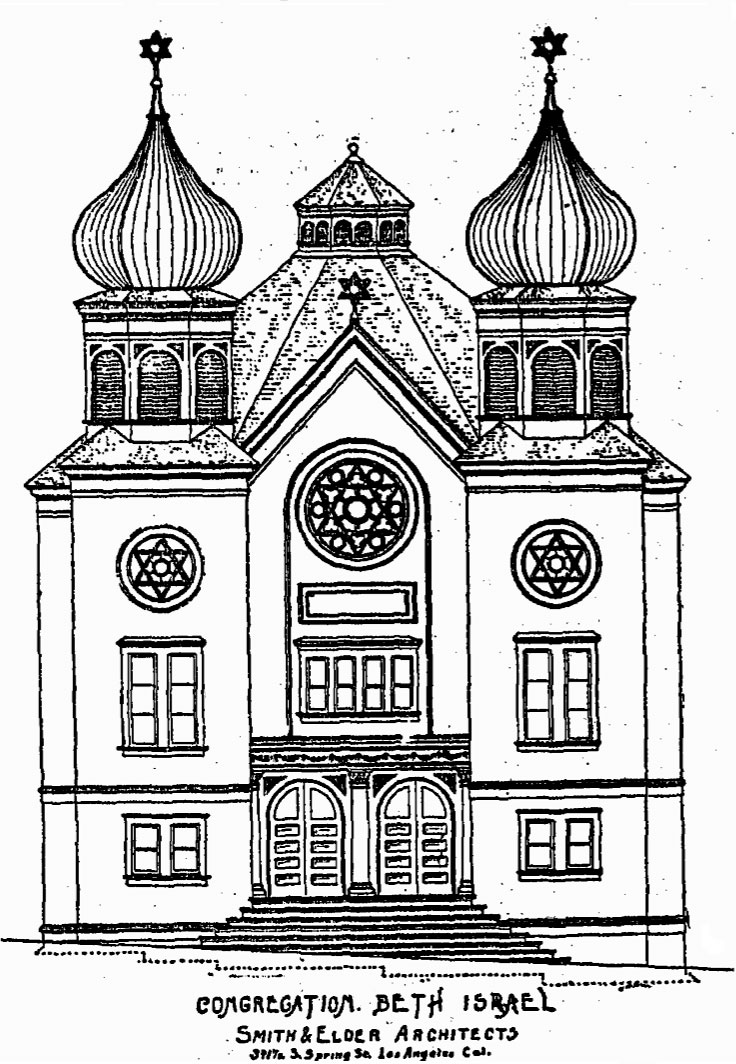
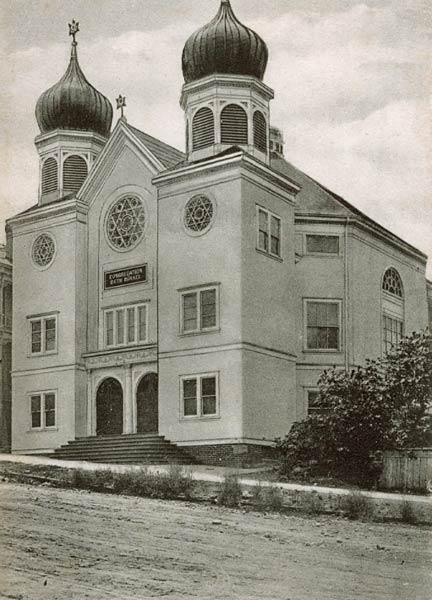
(from
A Visit...)
The cornerstone is laid July 1901, and is formally dedicated, with a march and speech from Mayor Snyder, March 1902.
(
Here is a photo of a wedding inside the Beth Israel in 1909.)
Dig the onion domes on both. Onion domes are not always associated with synagogues, belonging more to the Kievan Rus' (or Pietran Baroque) Russian thing, the Orthodoxy, the Mughal, etc.; I'd wager that these folk knew of the 1850s
Dohány Street Synagogue in Budapest or, more likely, its copycat, the 1871
Central Synagogue in New York, which spawned a (small) wave of onion-domed Hebraic temples across late-Victorian America.
What became of these two? B'nai B'rith is made obsolete with the opening of the late-20s opening of the Wilshire temple -- thus Ninth and Hope becomes a parking lot before 1950, according to the Sanborn maps. (And remains a parking lot today.)
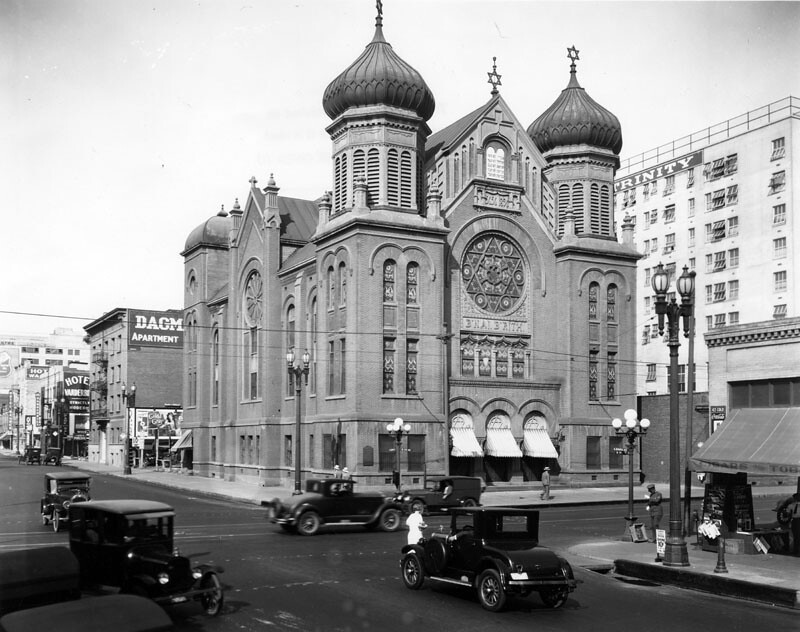
(
lapl)
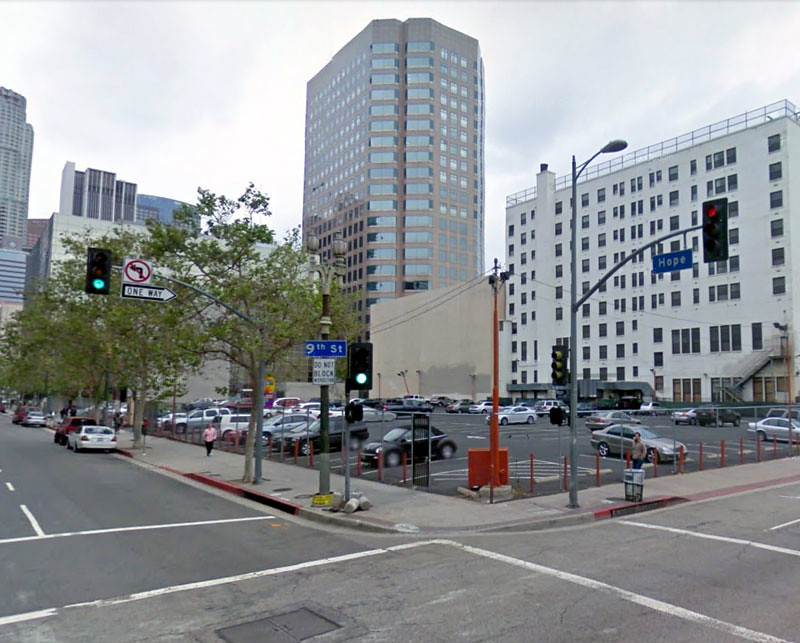 googlemaps
googlemaps
Now as for Bunker Hill's Beth Israel (AKA the Olive St Shul) it is, according to one of the sites I referenced here, "used until 1940."
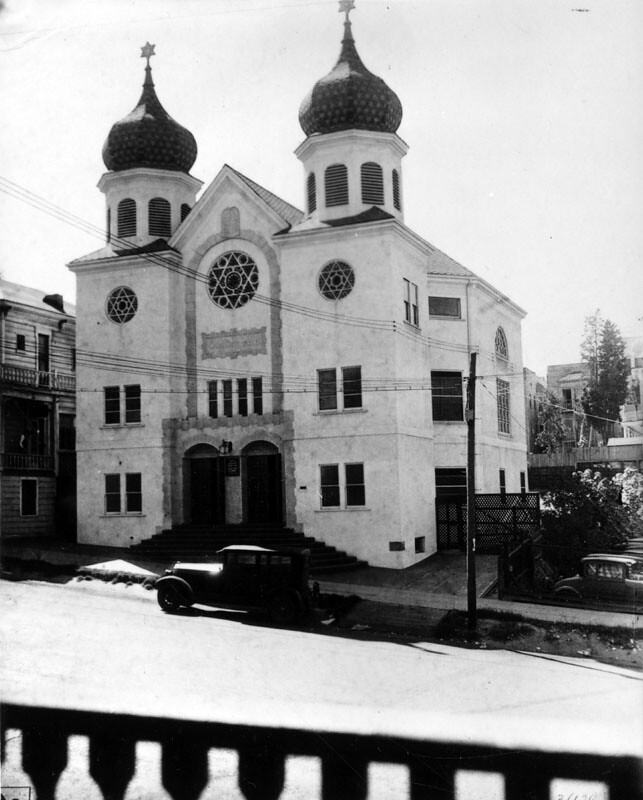
(
lapl )
I guess the more conservative strain of Hebraicism couldn't win out against the mounting tide of noir. Here's an image of the steps of the Beth Israel after its demolition.

(
offbunkerhill)
Note the backside of the
Carleton (its façade facing N Grand) which matches the above image.
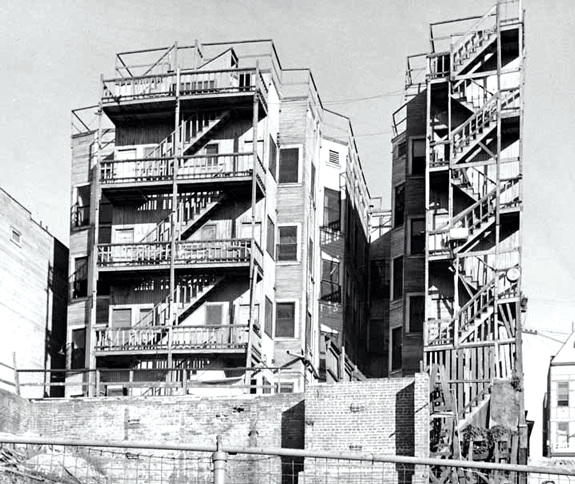
(
sacramento)
That color image above is by the inimitable Emil Kosa. In the distance, right, across the street on Grand, the green tower of the
St Angelo.
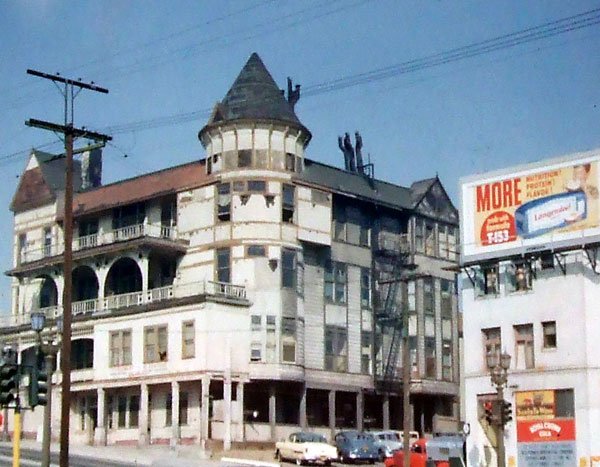
(
private)